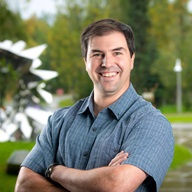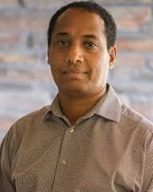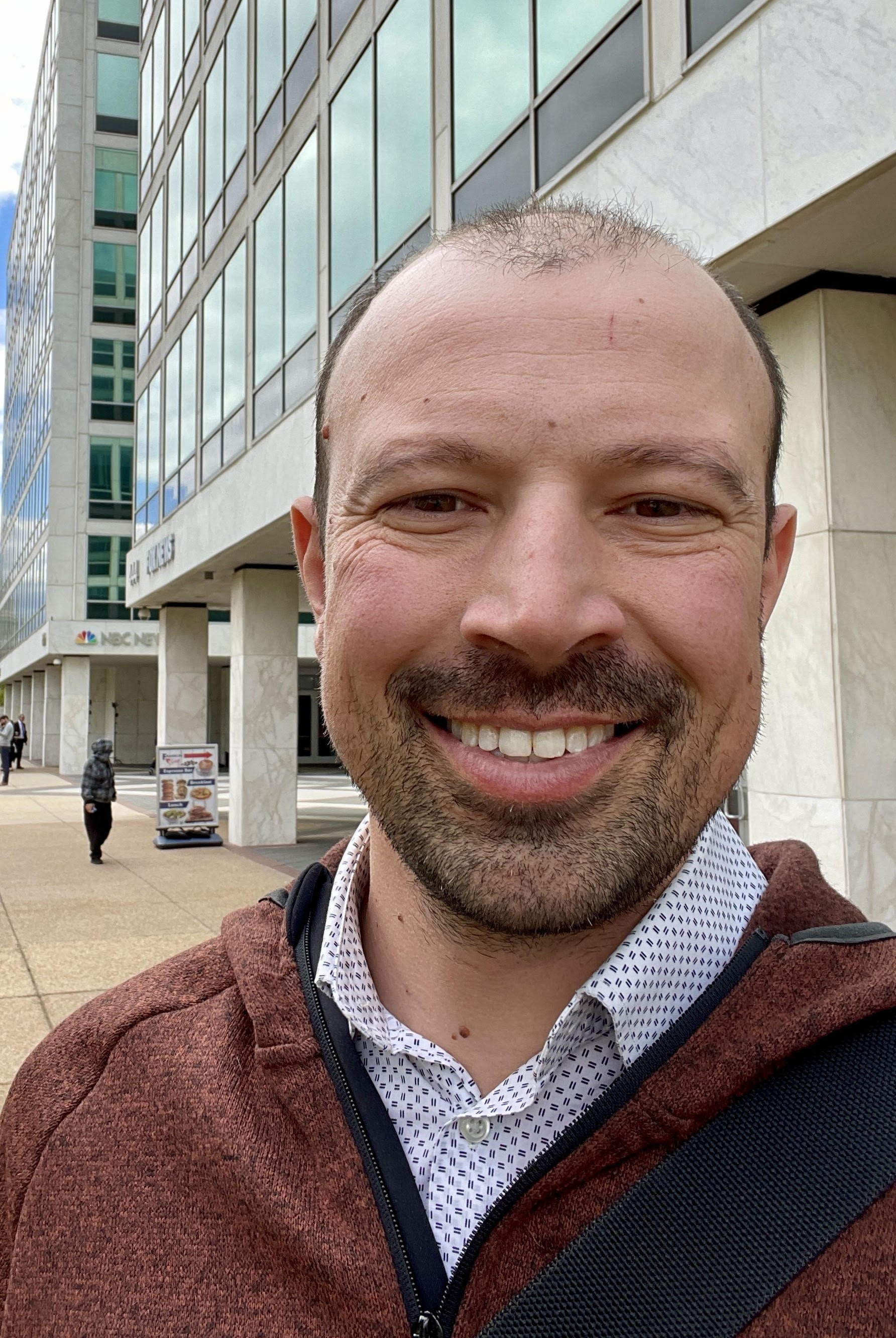REU Site: Research Experience in Cold Climate Engineering and Science
Background
This REU SITE aims to provide science and engineering undergraduate students with opportunities to participate in unique research available most likely only in Alaska. The University of Alaska Anchorage (UAA) is the largest university in Alaska, with roughly 15,000 students from all over the US and about 90 countries. UAA is in the heart of Alaska’s largest city, Anchorage, where culture, innovation, and adventure converge. Faculty at UAA conduct research in specialized fields, including environmental and natural science, cold climate engineering, biological field research to environmental chemistry.
About the REU SITE Program at UAA
This REU SITE aims to provide science and engineering undergraduate students with opportunities to participate in unique research available most likely only in Alaska, the approaches and results of which can be transferred to other regions. Students will have the opportunity to actively participate in scientific research projects specific to cold regions. The three types of research activities are: 1) laboratory work, data collection and analysis; 2) fieldwork, sampling, and data collection; and 3) modeling.
Eligibility
In order to be considered you must be:
- A U.S. citizen or permanent resident of the United States.
- Enrolled in a degree program (part-time or full-time) leading to a baccalaureate or associate degree.
- Students who are transferring from one college or university to another and are enrolled at neither institution during the intervening summer may participate.
- Students who have received their bachelor’s degrees and are no longer enrolled as undergraduates are NOT eligible to participate.
- Veterans, non-traditional students, first-generation college students, and those from underrepresented groups are encouraged to apply.
- No prior research experience is required.
Application Process Summary
To Apply you will need:
- Names and contact (email) addresses of 2 references who will be willing to write letters of RECOMMENDATION
- Resume or CV
- Completed Application Form (with questions answered)
- Unofficial Transcripts
RECOMMENDATION: Provide names and contanct information of 2 faculty members or supervisors at your home institution. We will contact them ot obtain letters of recommendation on your behalf. It is advised that you inform them about your application to the REU SITE Program.
TRANSCRIPTS: Upload your unofficial copies of your college transcripts to the online application portal. Upon acceptance to the program, students must provide official transcripts.
Program Dates
Application Deadline: March 15 2025.
The 2025 program period is May 26 through August 1, 2025. Students will need to arrive in Anchorage no later than May 25, 2025 and not plan to depart earlier than August 2, 2025.
Following the program period, we will maintain contact with you and will continue to encourage successful students to pursue additional training and opportunities in the cold climate engineering and science. Please plan to keep the REU Program PI (Dr. Getu Hailu) informed of your latest mailing address as well as your current e-mail address.
Financial Support
Students accepted to the REU program will receive the following financial support:
- Travel cost support (upto $930).
- Stipend of $650/wk (with the final paycheck dispersed upon receipt of the final research paper).
- University of Alaska Anchorage dormitory housing.
- Food allowance $175/wk
- $350 is provided to support each student’s research project and is paid to vendors on requests from mentors.
Selection Process
The PI, in collaboration with the faculty mentors, will review applications. Project assignments will consider the preferences of the mentor and the student. Early in April, accepted students will get notification. By April 15th, students must choose whether to accept or reject REU offers.
Diversity Statement
- UAA recognizes and values the diversity of our unique location in Southcentral Alaska, the ancestral homelands of the Dena’ina, Ahtna, Alutiiq/Sugpiaq, and Eyak/dAXunhyuu Peoples.
- The University fosters an inclusive, welcoming and respectful campus community that promotes diversity, civility, inclusion, and an appreciation for each unique member of our academic community. UAA promotes and celebrates diversity through its academic and community support programs, clubs, committees, and councils. Intellectual honesty, mutual respect, and freedom from discrimination, intimidation, discriminatory harassment, and violence are central to our mission.
- We honor diverse experiences and perspectives—including differences in ideas, religion, gender, gender identity, sexual orientation, ethnicity, race, culture, nationality, age, disability, veteran and socioeconomic status—and strive to create welcoming and inclusive learning environments where all are treated with respect.
- At UAA, valuing diversity is integral to excellence. Diversity maximizes our potential for creativity, innovation, educational excellence, and outstanding service to our communities.
For more information contact Dr. Getu Hailu at ghailu@alaska.edu.

This opportunity is funded by the National Science Foundation Grant #2349068.
- Investigating seismic hazards resulting from permafrost thaw in Alaska's Arctic regions. Mentor: Dr. Utpal Dutta
-
Geomicrobiology of extreme environments. Mentor: Dr. Brandon Briggs.
-
Solid particle erosion (SPE) of additively manufactured (AM) ceramic materials for space mission applications. Mentor: Dr. Getu Hailu.
-
Performance monitoring and evaluation of heat pumps in cold regions. Mentor: Dr. Getu Hailu.
-
Photochemical pathways and photoproducts of current and emerging sub-Arctic aquatic contaminants. Mentor: Dr. Patrick Tomco.
Brief descriptions of these projects are given below.
Project 1: Investigating seismic hazards resulting from permafrost thaw in Alaska's Arctic regions; Mentor: Dr. Utpal Dutta
The rapid thawing of permafrost in Alaska’s high-latitude landscapes, driven by climate change, has become a critical issue, threatening regional infrastructure stability. The rate of permafrost degradation is outpacing earlier predictions, underscoring the urgent need to understand its impacts. Identifying the thaw-unstable permafrost zones and selecting the most appropriate, cost-effective foundation types are two critical tasks to ensure the long-term durability of buildings and infrastructure while minimizing life-cycle costs in permafrost regions.
This project tackles this vital knowledge gap by conducting various geophysical (electrical resistivity, seismic, gravity) and geotechnical investigations at some critical sites in Alaska. A particular focus will be placed on testing the effectiveness of gravity data acquisition using a next-generation high-sensitivity micro-gravimeter to detect ice-rich permafrost and ground ice. Through detailed 3D mapping of soil density and volumetric ice content, this research aims to detect thaw-unstable conditions, ultimately bolstering the resilience of Arctic infrastructure and laying the groundwork for future studies on infrastructure adaptation in permafrost-affected regions.
The field surveys will serve as an educational platform, with undergraduate students receiving hands-on training in cutting-edge equipment, field protocols, safety procedures, and data collection techniques. Following the fieldwork, the students, principal investigators, and project team will process and interpret the data using advanced methods. This collaborative effort will provide critical insights into the extent of permafrost thawing and its far-reaching implications for infrastructure stability in the Arctic.
Project 2: Geomicrobiology of extreme environments; Mentor: Dr. Brandon Briggs.
Extreme environments host a variety of unique microbial life that is adapted to the harsh environmental conditions. Studying the life in these extreme environments provides foundational understanding of the extremes that life can withstand and provides clues to the search for extraterrestrial life on many exoplanets and moons. Furthermore, these microbes have an enormous potential for biotechnological applications that can be used in anything from food processing to sustainable mining. Very few of these microbes are
currently known and characterized. This research project looks to sample environmental analogs for places like the polar ice caps of Mars or icy moons such as Europa, Enceladus, and Titan by analyzing the
glacial outflow and sediment from Alaskan glaciers. Glaciers represent a unique environment here on Earth that can offer a snapshot of microbial communities preserved under slowly changing conditions. Similarly, environments covered by ice on exoplanets or moons will protect potential communities from surface conditions, and as such, studying glacial communities here on Earth provides an exciting analog for non-
terrestrial locations. These microbes have also evolved under extreme nutrient conditions and have adapted ways to obtain their nutrients from the surrounding rocks. Summer field and research expeditions, called Microbe Hunts, will provide an opportunity to obtain novel microbes from extreme environments in Alaska. Each Microbe Hunt will consist of lectures, field excursions, and laboratory exercises during the summer. Students will learn field and laboratory safety, methodologies in microbiology, chemistry, and the scientific method. Sessions will be devoted to interdisciplinary training across microbiology, geology, and chemistry. Students will learn field and laboratory safety, scientific methodologies in microbiology and chemistry.
Sessions will be devoted to interdisciplinary training across microbiology, geology, and chemistry. Students will develop and characterize (using both molecular and traditional methods) either microbial isolates or enrichment cultures; will assist in determining microbial metabolic diversity through cultivation experiments. These microbes can then be screened for biotechnological potential.
Project 3: Solid particle erosion (SPE) of additively manufactured (AM) ceramic materials for space mission applications; Mentor: Dr. Getu Hailu.
One of the wear processes through which the integrity of a component can be compromised is by erosive wear, which is a dynamic process in which material is removed from a target surface because of mechanical interaction between impinging particles and the target surface. Discrete particles impacting a target surface at a high speed result in material loss and mechanical degradation, potentially causing component damage and even mission failure. The objectives of this project are: 1) to study erosive wear of additively manufactured components experimentally and 2) to develop predictive erosive wear models. The goal is to advance our understanding of the response of AM manufactured ceramic parts for space mission applications to erosive wear. The project's outcome is the generation of essential data that will be used to improve the AM process and the development of predictive erosive wear models that will be used to assess the erosive wear performance of AM fabricated ceramic components.
Students participating in this project will (a) characterize particle properties such as shape, size, and distribution; determine particle spatial and velocity distributions; (b) help conduct SPE experiments at different impact angles; (c) analyze erosive wear data.
Project 4: Performance monitoring and evaluation of heat pumps in cold regions
Space heating of residential units in the Railbelt and Southeast regions of Alaska comprises about 80% of the total energy consumption in those areas. Natural gas is the primary fuel for residential home heating in 64% of the households in these regions (WHPacific, 2012). Heat pumps are among the cleanest energy-efficient technologies identified by the DOE as innovative technologies for space heating and cooling, that could substantially contribute to the goal of reducing fossil fuel use (Goetzler et al., 2014). Among heat pumps, air-source heat pumps offer a lower initial cost than ground-source heat pumps (40% reduction in installation cost compared to ground-source heat pumps) (Safa et al., 2015). However, the performance of an air source heat pump decreases in colder outdoor temperatures, and the extent to which the heat pump performance declines in cold regions needs to be understood to improve their performance. The primary objective of this project is to understand the energy tradeoffs between a heat pump and any other heating devices (such as backup resistance heaters) used in a residential house in cold region homes. This evaluation is performed as part of a whole-house monitoring effort. Once the essential characteristics of the residential house are evaluated (i.e., the heating load is determined for the entire heating season, considering building envelope characteristics and the local weather), the heating energy offset by the heat pump is of particular interest. Year-long measurements are made and recorded using extensive sensor network and data is recorded using data loggers.
Students participating in this project, under the guidance of the PI, will perform extensive data collection and analyses on (a) outdoor temperature and humidity, (b) indoor temperature and humidity, (c) airflow through the air handling unit - AHU (conditioned air delivered to the house), (c) power consumed by the outdoor unit (compressors, fan, controls), by the AHU fan, and by the electric heater, (d) system status (defrosting), and perform performance evaluation.
Project 5: Photochemical pathways and photoproducts of current and emerging sub-Arctic aquatic contaminants; Mentor: Dr. Patrick Tomco.
This project investigates the aquatic photochemical pathways by which emerging contaminants in the sub-Arctic are degraded and the extent to which high-latitude environmental factors impact persistence. Sub-Arctic environmental conditions have a unique timeline of contaminant attenuation compared to temperate conditions and a unique relative contribution of direct and indirect processes. This project assesses explicitly three priority compounds: 12α-hydroxy-rotenone, 6-PPD quinone, and fluoridone. These have recently been detected persistently in Alaskan waterways, but no information exists regarding photochemical pathways and photo-transformation products in natural waters.
In this project, students will help determine individual contributions of dissolved organic matter, hydroxyl radicals, singlet oxygen, and triplet excitation states. The temperature dependence of each process will be compared at 4, 12, and 20 °C, which spans the typical range of surface water temperatures. Photoproducts resulting from each process will be profiled using high-resolution mass spectrometry combined with non-targeted analytical approaches. This information will provide a better fundamental understanding of the environmental drivers for these photochemical processes.

This opportunity is funded by the National Science Foundation Grant #2349068.
Please contact Dr. Getu Hailu for more information at ghailu@alaska.edu

This opportunity is funded by the National Science Foundation Grant #2349068.
- Dr. Utpal Dutta

Professor
Civil Engineering
EIB 301U
Phone: (907) 786-1952
udutta2@alaska.eduResearch interest: Warm permafrost responds to climate change and the associated hazards. Assessment of seismic risks, including the effects of frozen ground. Assessment of the potential for multi-story buildings to collapse due to long-duration earthquakes.
- Dr. Brandon Briggs

Professor
Department of Biological Sciences
CPSB 301R
(907) 786-1548
bbriggs@alaska.edu
https://www.linkedin.com/in/extrememicrobeResearch interest: Interaction between microbial processes and the environment. How does environmental stress alter microbial distributions and functions, and what microbial attributes affect biogeochemical cycles? In general, Dr. Briggs' research ask these questions in extreme environments that have an abundance of novel microorganisms and functional pathways; yet often provide a simplified view of the microbial ecology that can provide insight into more complex environments, life on early Earth, or potential life on other planets. Some of the environments that I have studied are deep marine sediments, terrestrial hot springs, and Tibetan saline lakes.
- Dr. Getu Hailu

Associate Professor Mechanical Engineering
University of Alaska Anchorage
3211 Providence Dr. Anchorage, AK 99508ECB 301G
907-786-6366
ghailu@alaska.eduCurrent research interest: Dr. Hailu's research interests encompass a variety of fields including renewable energy, environmental sustainability, and impact dynamics. Key areas include:
-
Renewable Energy Technologies: Focus on thermal storage systems and building-integrated photovoltaic/thermal (PV/T) systems, aiming to enhance energy efficiency in buildings.
-
Cold Climate Air Source Heat Pumps: Performance monitoring of advanced heat pump systems specifically designed for cold climates, improving their efficiency and performance.
-
Air Source Heat Pump Water Heaters: Research on heat pump technology for water heating applications, contributing to energy savings and sustainability.
-
Indoor Air Quality: Investigating the concentration and movement of indoor pollutants (gaseous and particulate matter) in indoor environments and effective removal methods.
-
Renewable-Energy Based Drying Processes: Exploring drying processes powered by renewable energy, which can significantly reduce energy consumption in various industries.
-
Cryogenic Solid Particle Erosion: Studying the effects of cryogenic temperatures on damage caused by solid particle impacts on additively manufactured ceramic materials for space industry.
-
- Dr. Patrick Tomco

Professor/ASET Director
Department of Chemistry
CPSB 302G
(907) 786-1260
pltomco@alaska.edu
Research Interests: Nutrient cycling, contaminant fate and transport, LC/MS/MS instrumental analysis, biodegradation, stable isotope methodology, terrestrial-aquatic interactions, and microbial ecology.

Scan the QR code above to apply or click on the following link.
https://docs.google.com/forms/d/e/1FAIpQLSfU1dRxfj8cdziE8UApC8gcuuEi7RdQR6jw_q7w2RmF2p0oNA/viewform
You can also apply at https://etap.nsf.gov/award/7370/opportunity/9924

This opportunity is funded by the National Science Foundation Grant #2349068.
- Are there any courses that must be taken in order to be eligible for this program?While there are no set course requirements, candidates must have at least one year of college under their belt.
- What kind of student is sought for by this REU program?
- Strong motivation for the project.
- Willingness to live in campus housing for the duration of the program.
- Availability to work 40 hours per week.
- Commitment to refrain from enrolling in summer classes.
- Dedication to attending weekly seminars, research sessions, and professional development meetings.
- Requirement to prepare and submit a written report at at the end, and participate in a poster or oral presentation.
- Commitment to participating in surveys.
-
Willingness to communicate after completing the program.
- Will students who are not selected be informed?Yes, students who are not selected will be notified.
- What steps do I need to take if I am selected for this program?
- Students are not permitted to register for any other coursework while participating in the program.
- Students must refrain from any work outside of their research project and extracurricular responsibilities during the program.
- Students are required to fully engage in the research environment, collaborating with their faculty mentor’s research group on the assigned project and participating in mandatory extracurricular activities for the entire 10-week duration.
- Students must meet all eligibility criteria to participate in the REU Program.
- Incomplete fulfillment of the REU summer research commitment may lead to removal from the program and/or a reduction or revocation of the stipend.
- How much time is required for this REU program?
REU participants are expected to commit approximately 40 hours per week for 10 weeks. In addition to research work, participants must participate in training (orientation, workshops on ethical research methods, behavior expectations, UAA’s policy and code of conduct about sexual or other forms of harassment, and intake surveys). REU participants cannot enroll in other summer courses or hold a part-time job, as the program requires full commitment. Participation means being available for the entire 10-week duration. A typical workday runs from 8:00 a.m. to 5:00 p.m., with a break for lunch, although exact hours may vary based on research work and seminars, which may require starting early or staying late. Full participation in all required extracurricular activities is expected. At the end of the program, students will either present a poster or give a short presentation at the Summer Symposium and must submit a formal report on their research project.
- Will I be paid as an REU participant?
Yes, REU participants receive a stipend of $650 per week for the 2025 summer research program. In addition, on-campus housing, a food allowance, and travel support are provided.
- Is my REU stipend taxable income?
Your stipend may be taxable, and you are responsible for reporting it on your tax filings. The program does not withhold taxes from fellowship stipend payments. For specific tax questions, it’s recommended to consult a tax advisor or refer to IRS Publication 970, "Tax Benefits for Education." You can access this publication at http://www.irs.gov/publications/p970/index.html or by searching "IRS Gov Publication 970." Keep in mind that the IRS updates this publication annually.

This opportunity is funded by the National Science Foundation Grant #2349068.









